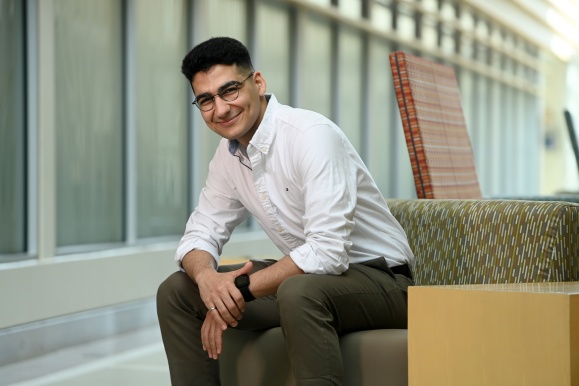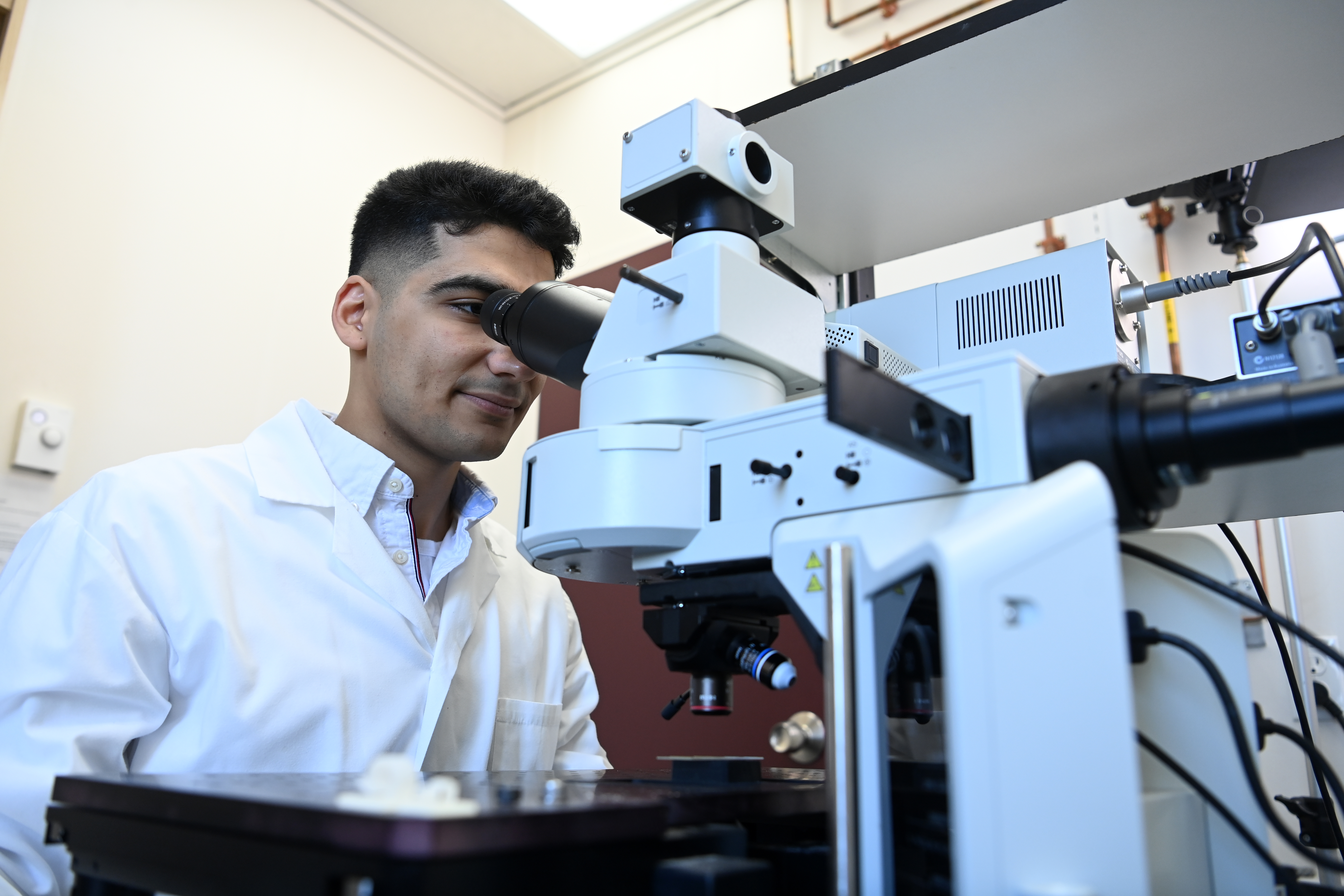News
» Go to news mainDal Engineering Student Lights the Way to New Heart Treatment

Many of us know someone who has been impacted by heart disease. In fact, Health Canada reports that approximately 1 in 12 Canadians over the age of 20 are living with a diagnosed form of the disease.
While some people experience only mild symptoms, others face serious and sometimes life-threatening complications including blood clots, stroke, heart failure, or cardiac arrest. Among the wide range of consequences of heart disease are arrhythmias, disruptions of the hearts electrical activity that can lead to sudden death.
“One of the most common ways to die from an arrhythmia is during your sleep,” says Ahmed Ramadan, a PhD candidate in Dalhousie’s Department of Biomedical Engineering. He knows this firsthand. “I've had a couple of friends, actually, in the span of a year who passed like that.”
Shining a light on optogenetics
Ramadan is now researching a new approach to arrhythmia treatment using optogenetics, a technology that uses light to control how specific cells in the heart function by introducing light-sensitive proteins. While most past research has focused on just one type of light-sensitive protein, the discovery of new proteins has opened doors to more effective treatments.
Arrhythmias occur when the heart’s electrical signals become disrupted. “So right now, when your heart beats, it has a rhythm,” explains Ramadan. “When it's arrhythmic, it's out of rhythm. If we can control the electrical signal with light, then we can control that chaotic electrical activity and restore it.”
To test his research, Ramadan injects light-sensitive proteins into the hearts of zebrafish using mRNA technology, by a similar method to that used in COVID-19 vaccines. Once the fish have fully developed, Ramadan performs experiments on their hearts in complete darkness, to prevent the proteins from being accidentally activated, and with a highly controlled LED system.

Once the proteins are injected, he flashes light on the specific region of the heart where the arrhythmia originates. The light temporarily stops the abnormal rhythm, and when it’s turned off, the heart returns to normal activity.
“I've shown that using these proteins, we can control how the heart’s electrical signal works down to individual cells,” says Ramadan. “I've shown that we can control how the heart beats with light, and that we can stop arrhythmias with light as well.”
A Pain-Free Alternative
Ramadan believes his research could lead to less invasive, pain-free alternatives for treating arrhythmias.
“For people living with arrhythmias, treatment options are still largely brute force,” he says. Patients are often prescribed non-specific medications that can sometimes make their condition worse. If those fail, the next step is usually ablation, a procedure where doctors intentionally scar or destroy the heart tissue responsible for the arrhythmia. However, even after ablation, the abnormal rhythm often returns.
In high-risk cases, patients may receive a defibrillator that monitors the heart and delivers an electric shock to restore normal rhythm when an arrhythmia is detected.
“My hope is that in five to ten years, we develop a pain-free solution for arrhythmias using this biological technology,” says Ramadan. “The COVD-19 vaccine shows that we can deliver these proteins in people, and if we can, arrhythmia patients could possibly get an implanted LED device, instead of a shock device, that flashes light to restore normal rhythm without any pain or other complications.”
The Heart of Engineering
Although Ramadan admits that his research can be stressful but is motivated by the fact that optogenetics is a new and evolving field with the potential to make a real impact. That drive is what led him to biomedical engineering.

“I then took a class called Biomechanical Engineering, and that’s where I met my current (PhD) supervisor, Dr. Alex Quinn, who was teaching mechanics of the heart. I didn’t know anything about the heart then,” he explains.
Today, Ramadan has become well-versed in the inner workings of the heart. In March, he took home first place at Dalhousie’s Three Minute Thesis (3MT) Competition for his ability to clearly and compellingly explain his doctoral research in just three minutes. His presentation earned him both the top prize and the People's Choice Award.
He’s now going on to represent Dalhousie at the Eastern Regional 3MT competition, taking place on June 4 at Memorial University in St. John’s.“It was an incredible honour to share my research with the Dalhousie community during the 3MT competition, and I am excited to represent our University at the 3MT Eastern Regionals,” says Ramadan. “These sorts of events are critical for bridging the gap between researchers and the public, by helping clear up misconceptions about research, explaining the impact of public investment, and pushing for policy changes to enable new treatments.”
Recent News
- Arad Gharagozli engineers the future of space exploration
- Dal Engineering Student Lights the Way to New Heart Treatment
- DalSolutions: Reinventing repair to keep Canada’s Navy mission ready
- Engineering Young Alumni Reception
- Students scale new heights with Toronto tower pitch
- Dalhousie Students Develop Automation Tool for Irving Shipbuilding
- 2025 Capstone Poster Expo
- Dalhousie Engineering Students Lead the 2025 Canadian Engineering Competition
